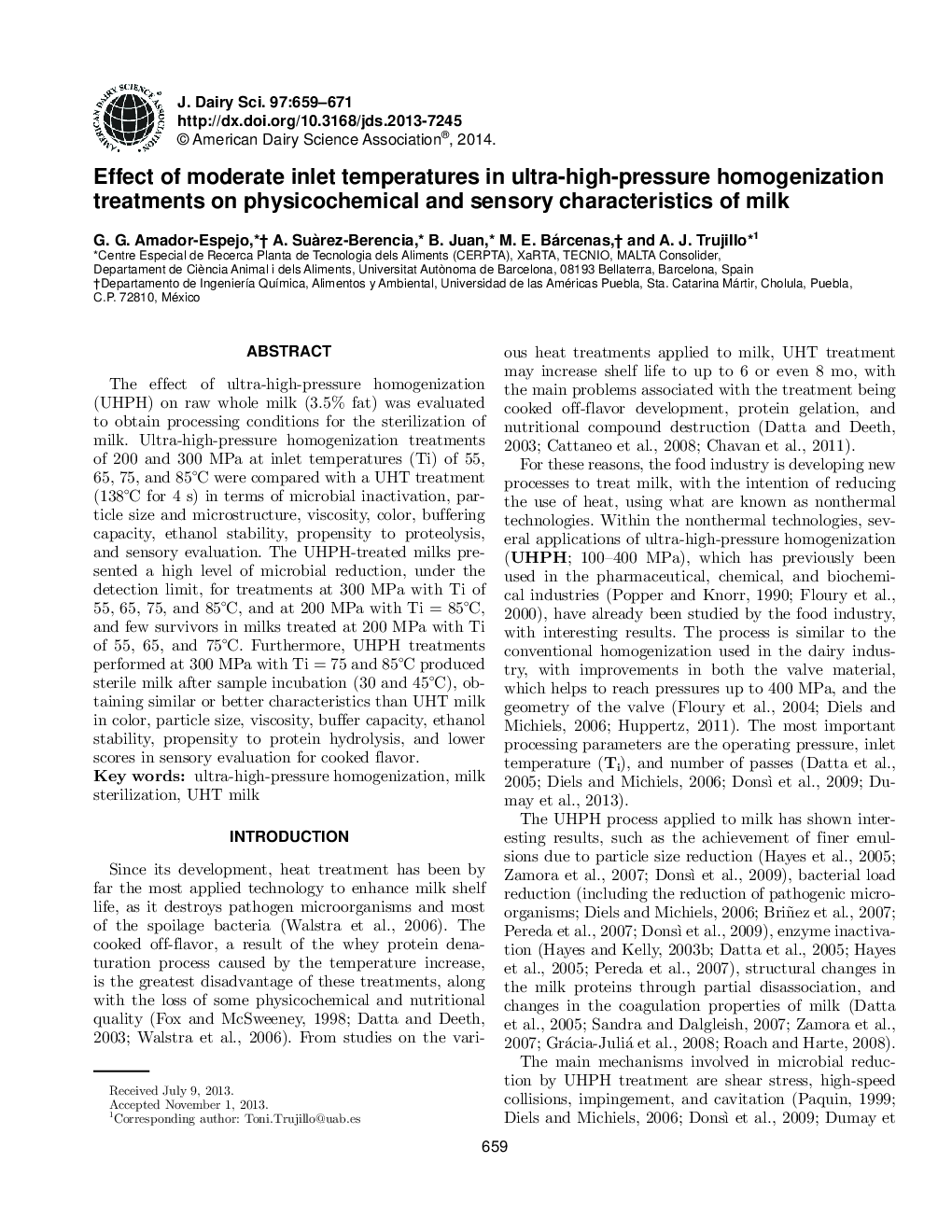| Article ID | Journal | Published Year | Pages | File Type |
|---|---|---|---|---|
| 10976982 | Journal of Dairy Science | 2014 | 13 Pages |
Abstract
The effect of ultra-high-pressure homogenization (UHPH) on raw whole milk (3.5% fat) was evaluated to obtain processing conditions for the sterilization of milk. Ultra-high-pressure homogenization treatments of 200 and 300 MPa at inlet temperatures (Ti) of 55, 65, 75, and 85°C were compared with a UHT treatment (138°C for 4 s) in terms of microbial inactivation, particle size and microstructure, viscosity, color, buffering capacity, ethanol stability, propensity to proteolysis, and sensory evaluation. The UHPH-treated milks presented a high level of microbial reduction, under the detection limit, for treatments at 300 MPa with Ti of 55, 65, 75, and 85°C, and at 200 MPa with Ti = 85°C, and few survivors in milks treated at 200 MPa with Ti of 55, 65, and 75°C. Furthermore, UHPH treatments performed at 300 MPa with Ti = 75 and 85°C produced sterile milk after sample incubation (30 and 45°C), obtaining similar or better characteristics than UHT milk in color, particle size, viscosity, buffer capacity, ethanol stability, propensity to protein hydrolysis, and lower scores in sensory evaluation for cooked flavor.
Keywords
Related Topics
Life Sciences
Agricultural and Biological Sciences
Animal Science and Zoology
Authors
G.G. Amador-Espejo, A. Suà rez-Berencia, B. Juan, M.E. Bárcenas, A.J. Trujillo,
